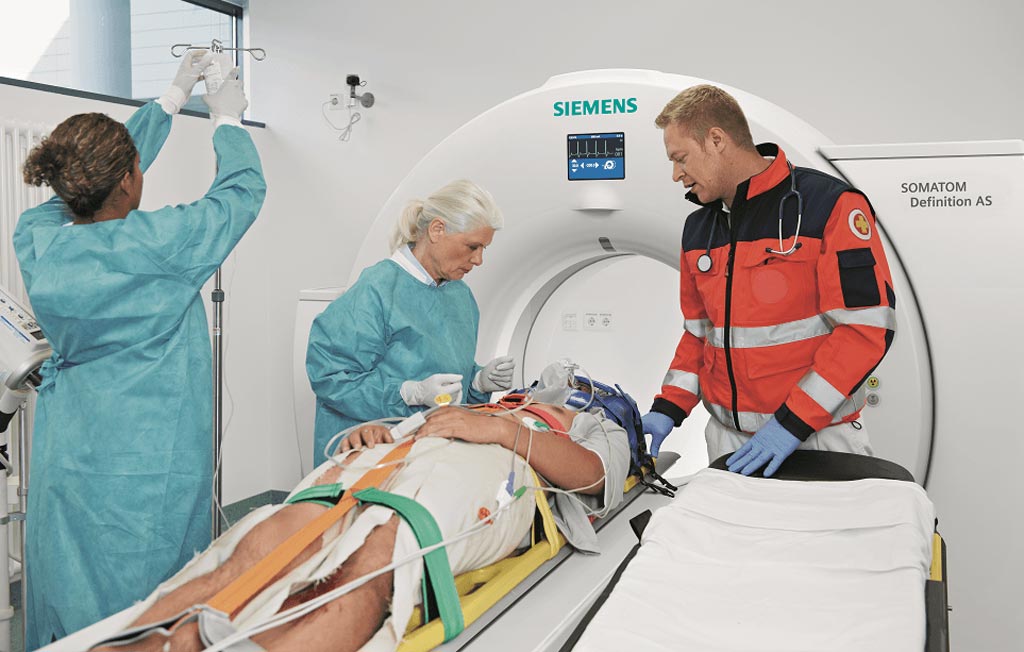EHR Decision Support Reduces Emergency Imaging
By MedImaging International staff writers
Posted on 01 Aug 2017
A new study shows that embedding clinical decision support (CDS) software in the electronic health record (EHR) can decrease the use of high-cost imaging in the emergency department (ED).Posted on 01 Aug 2017
Researchers at the University of Colorado School of Medicine (Aurora, CO, USA), Poudre Valley Hospital (Fort Collins, CO, USA), and other institutions conducted a longitudinal study in five EDs in a single healthcare system with a common EHR. During the study, validated scoring tools for identifying head injury, C-spine injury, and pulmonary embolism (PE) were embedded into the EHR. The main outcome was the proportion of computerized tomography (CT) scans ordered by provider.

Image: A new study shows decision support software can help ED clinicians determine the need for a CT (Photo courtesy of Siemens Healthcare).
The results revealed that out of 235,858 total patient visits in all study sites there was greater than 6% decrease in utilization of CT brain and CT C-spine; the use of CT for PE was also decreased, but was not significant. For all CT types, high utilizers in the pre-intervention period decreased usage over 14% in the post-intervention period with CT brain, CT C-spine, and CT PE, without changing their usage practices. For CT brain, low utilizers did not increase usage, but for CT C-spine and CT PE usage was increased. The study was published on July 11, 2017, in Academic Emergency Medicine.
“Integrating CDS into the provider workflow promotes usage of validated tools across providers, which can standardize the delivery of care and improve compliance with evidence-based guidelines,” said lead author Kelly Bookman, MD, director of the emergency medicine department at Poudre Valley Hospital. “Getting CDS delivered at the right time, to the right person, seamlessly within their workflow is the key to driving compliance with standardized, evidence based, best practices.”
CDS involves a variety of tools to enhance decision-making in the clinical workflow, including current guidelines, computerized alerts and reminders to care providers and patients, condition-specific order sets, focused patient data reports and summaries, documentation templates, diagnostic support, and contextually relevant reference information, among others. CDS requires computable biomedical knowledge, person-specific data, and a reasoning or inferencing mechanism that combines knowledge and data to generate and present helpful information to clinicians as care is being delivered.
Related Links:
University of Colorado School of Medicine
Poudre Valley Hospital














